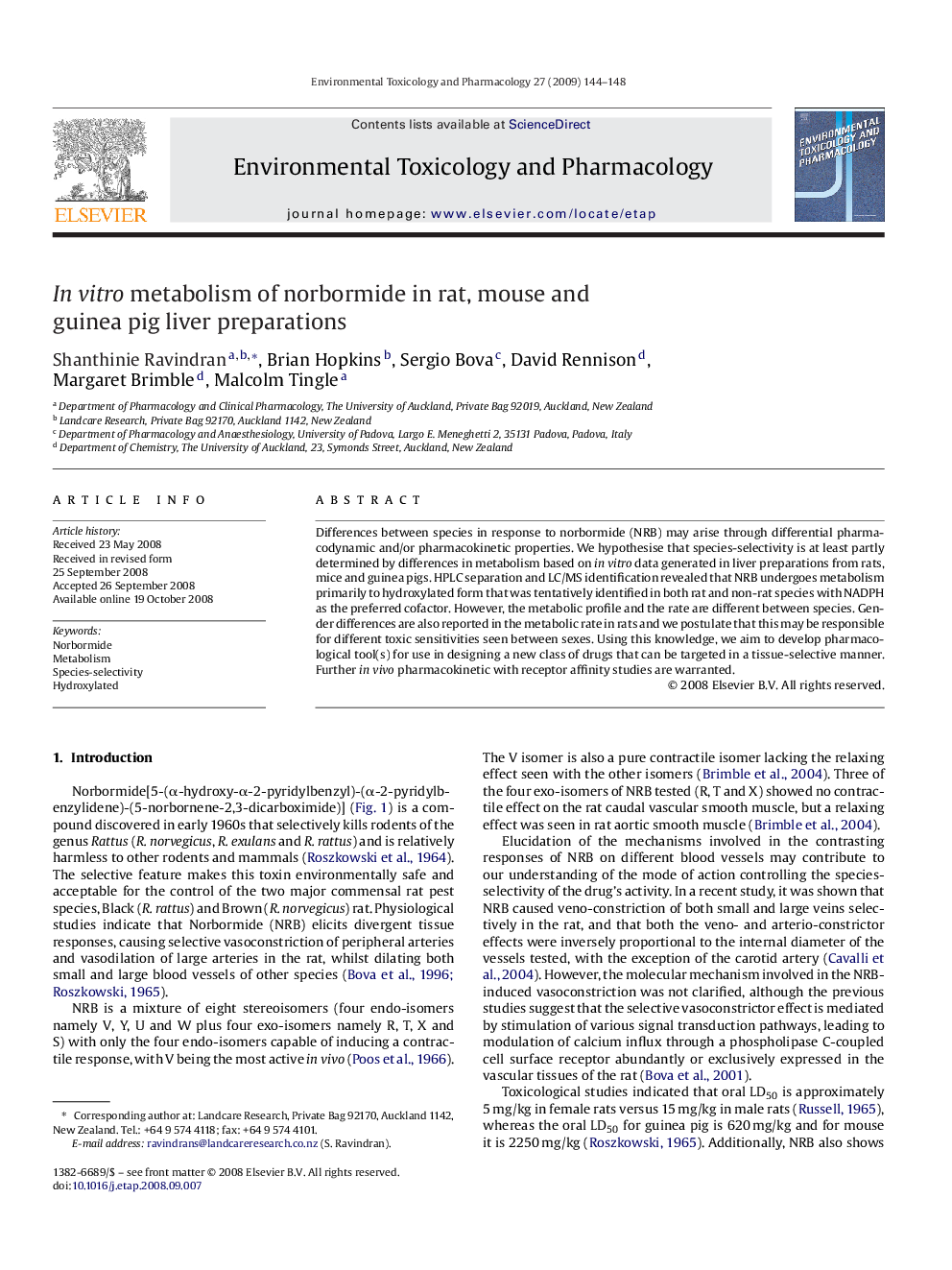| Article ID | Journal | Published Year | Pages | File Type |
|---|---|---|---|---|
| 2583835 | Environmental Toxicology and Pharmacology | 2009 | 5 Pages |
Differences between species in response to norbormide (NRB) may arise through differential pharmacodynamic and/or pharmacokinetic properties. We hypothesise that species-selectivity is at least partly determined by differences in metabolism based on in vitro data generated in liver preparations from rats, mice and guinea pigs. HPLC separation and LC/MS identification revealed that NRB undergoes metabolism primarily to hydroxylated form that was tentatively identified in both rat and non-rat species with NADPH as the preferred cofactor. However, the metabolic profile and the rate are different between species. Gender differences are also reported in the metabolic rate in rats and we postulate that this may be responsible for different toxic sensitivities seen between sexes. Using this knowledge, we aim to develop pharmacological tool(s) for use in designing a new class of drugs that can be targeted in a tissue-selective manner. Further in vivo pharmacokinetic with receptor affinity studies are warranted.
